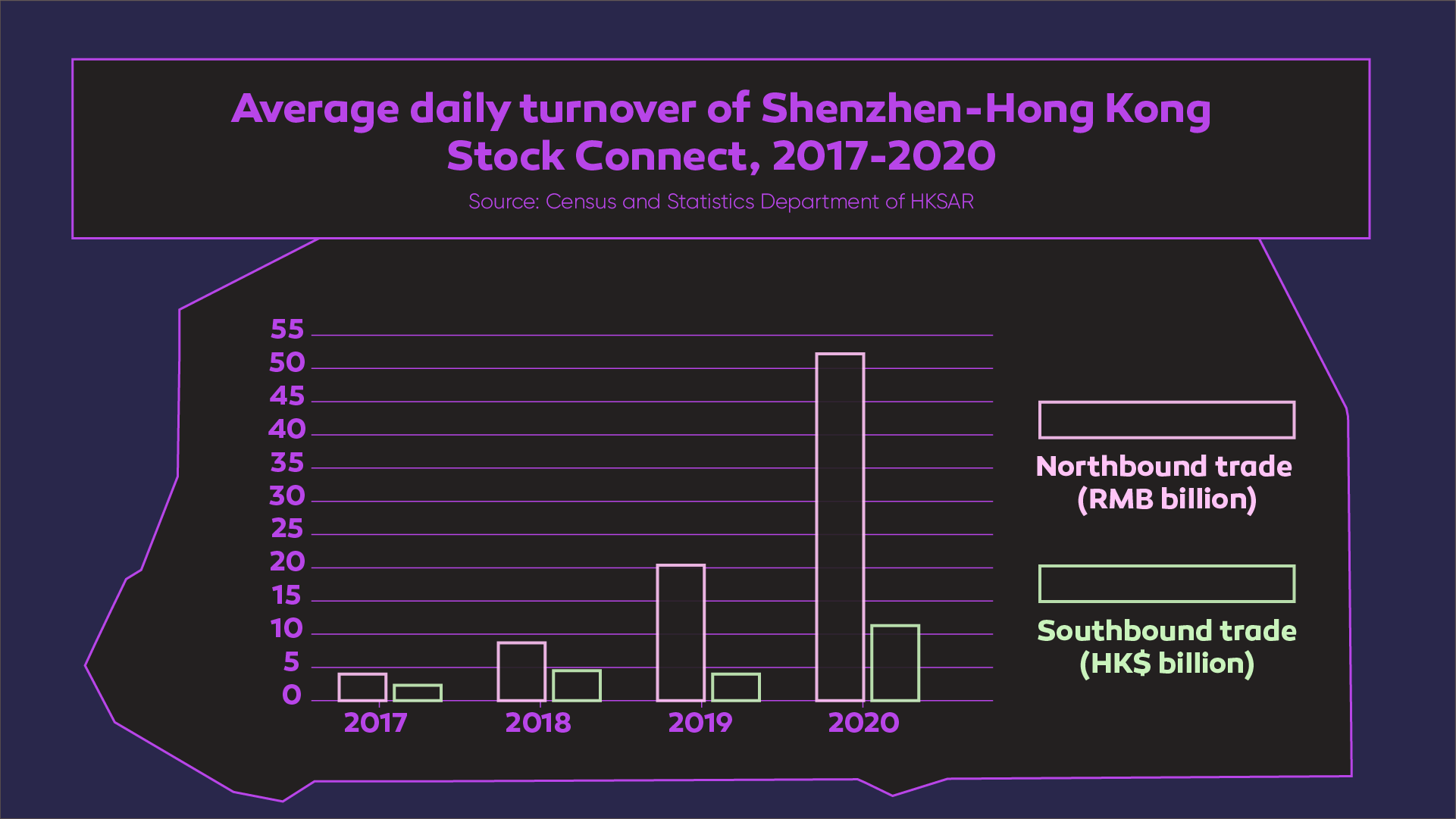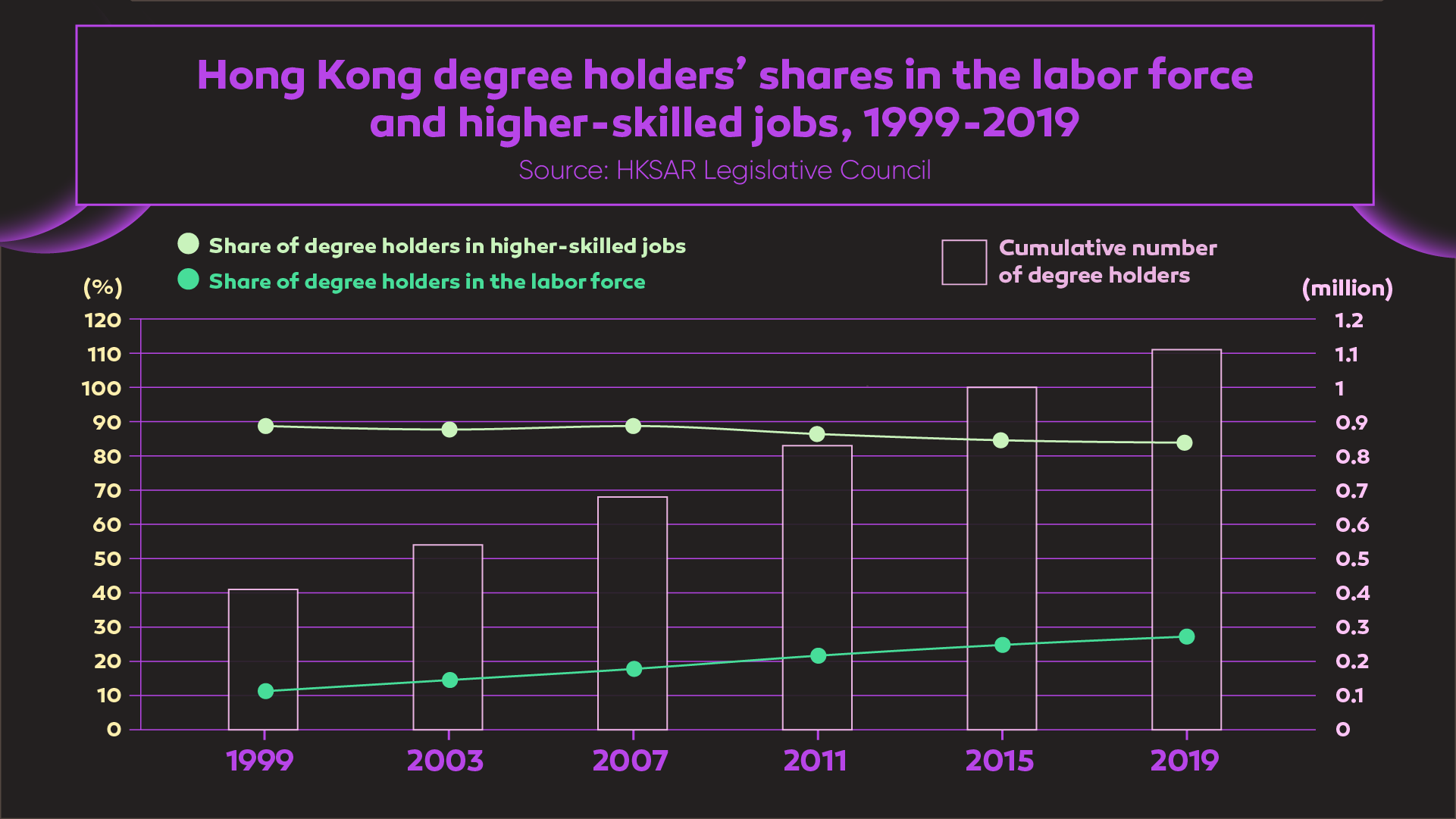04:03

The days have gone when Hong Kong was the absolute center of the region. In 2018, Hong Kong's GDP was overtaken for the first time by Shenzhen, its neighboring city in the Chinese mainland. Two years later, Guangzhou, the provincial capital of Guangdong, did the same leap, leaving Hong Kong today only the third largest economy in the region.
The region that we are talking about is called the Greater Bay Area (GBA), located along the southern coast of China. It comprises the two special administrative regions (SAR) of Hong Kong and Macao as well as nine Chinese mainland cities in Guangdong Province.
For Hong Kong, the economic rescaling in the region is an inevitable outcome of the Chinese mainland's economic growth. And to secure its future prosperity, it is key that Hong Kong integrates itself more deeply into the GBA, and data will tell you why.
First, due to the geographical proximity, the GBA is a key node in channeling Hong Kong's capital investment into the Chinese mainland.
Statistics show that since the launch of the Shenzhen-Hong Kong Stock Connect at the end of 2016, the daily turnover of northbound trade, which is the capital flow from Hong Kong to Shenzhen, increased from 4 billion yuan (about $0.6 billion) in 2017 to 52.2 billion yuan (about $8.4 billion) in 2020, which was significantly higher than that of southbound trade over the same period.

This imbalance has generally reflected the economic power shift between Hong Kong and the Chinese mainland in recent years, thus making the GBA ever more important to Hong Kong's future capital development.
Second, in addition to the capital market, the GBA is also vital to Hong Kong's transformation into a knowledge-based economy.
According to statistics from the Hong Kong SAR Legislative Council, Hong Kong lags behind almost all other cities in the GBA in regard to research and development (R&D) in local economies.
Take Shenzhen, the innovation and technology power house in the region, as a reference. In 2019, Shenzhen spent 4.93 percent of its GDP in R&D, and enjoyed 2,354 R&D personnel per 100,000 employees in its local workforce. In comparison, the respective two figures in Hong Kong were only 0.86 percent and 868 personnel.
To catch up, Hong Kong must connect more closely with cities in the GBA to share resources, talents and expertise for the development of innovation and technology.
Last, Hong Kong's future prosperity cannot be secured without investment in its future generations, for which the GBA also has a lot to offer.
Statistics show that over the past two decades, with the continued expansion of tertiary education, the share of degree holders in Hong Kong's labor force rose rapidly from 12.3 percent in 1999 to 28 percent in 2019.

This, however, was accompanied by the falling share of degree holders in higher-skilled jobs, which declined from 88.6 percent in 1999 to 83.8 percent in 2019, reflecting a job mismatch for degree holders as not enough higher-skilled jobs are now available for them in the city.
To tackle this problem, at the end of 2020, Hong Kong partnered with other cities in the GBA to launch a new youth employment scheme that would provide to university graduates 2,000 positions in the region.
The unstoppable trend is that the economic growth of the Chinese mainland will continue to reshape the urban landscapes of the region. For Hong Kong, the depth of integration into the GBA will therefore determine its future prosperity for a long time to come.
(If you want to contribute and have specific expertise, please contact us at opinions@cgtn.com. Follow @thouse_opinions on Twitter to discover the latest commentaries in the CGTN Opinion section.)

